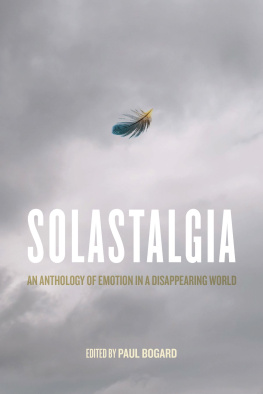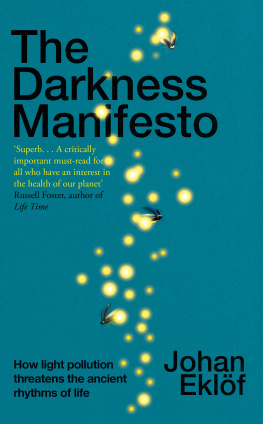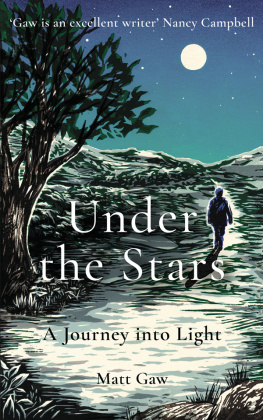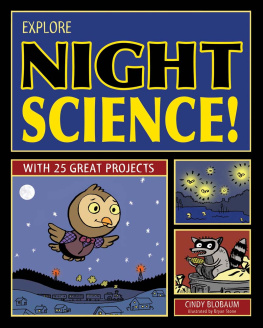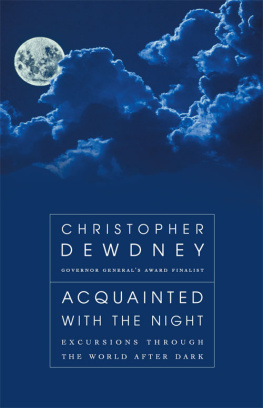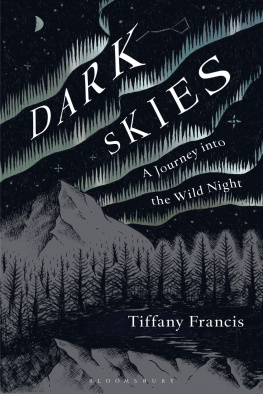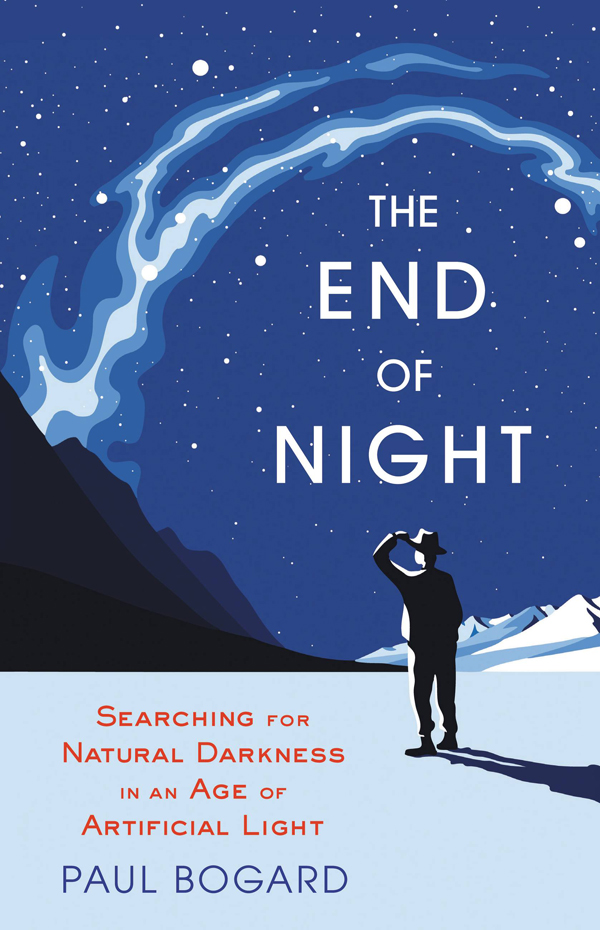
In accordance with the U.S. Copyright Act of 1976, the scanning, uploading, and electronic sharing of any part of this book without the permission of the publisher is unlawful piracy and theft of the authors intellectual property. If you would like to use material from the book (other than for review purposes), prior written permission must be obtained by contacting the publisher at permissions@hbgusa.com. Thank you for your support of the authors rights.
Thank you for buying this ebook, published by Hachette Digital.
To receive special offers, bonus content, and news about our latest ebooks and apps, sign up for our newsletters.
Sign Up
Or visit us at hachettebookgroup.com/newsletters
For more about this book and author, visit Bookish.com.
Copyright 2013 by Paul Bogard
Cover design by Lindsey Andrews
Cover illustration by Tyler Nordgren
Cover copyright 2013 Hachette Book Group, Inc.
All rights reserved. In accordance with the U.S. Copyright Act of 1976, the scanning, uploading, and electronic sharing of any part of this book without the permission of the publisher constitute unlawful piracy and theft of the authors intellectual property. If you would like to use material from the book (other than for review purposes), prior written permission must be obtained by contacting the publisher at . Thank you for your support of the authors rights.
Little, Brown and Company
Hachette Book Group
237 Park Avenue, New York, NY 10017
littlebrown.com
twitter.com/littlebrown
facebook.com/littlebrownandcompany
First ebook edition: July 2013
Excerpt from To Know the Dark copyright 1998 by Wendell Berry from The Selected Poems of Wendell Berry. Reprinted by permission of Counterpoint.
The publisher is not responsible for websites (or their content) that are not owned by the publisher.
The Hachette Speakers Bureau provides a wide range of authors for speaking events. To find out more, go to hachettespeakersbureau.com or call (866) 376-6591.
ISBN 978-0-316-22879-4
To my mother and father.
And for all the life that depends on darkness.
To go in the dark with a light is to know the light.
To know the dark, go dark. Go without sight,
and find that the dark, too, blooms and sings,
and is traveled by dark feet and dark wings.
W ENDELL B ERRY
Have you ever experienced Darkness, young man?
I SAAC A SIMOV (1941)
A t least when it comes to light pollution, what happens in Vegas does not stay in Vegas. What happens here seeps across the surrounding desert so that national parks in Nevada, California, Utah, and Arizona, tasked with conserving their features unimpaired for the enjoyment of future generations, report their horizons aglow, their dark skies tainted. Its to one of those parks, Great Basin, that I am headedtwo hundred fifty miles north on Nevadas US Route 93, two lanes rising from I-15 toward Elyto see for myself whats left of the dark.
The story is the same all over the countrydark places disappearing from the map. Computer images based on NASA photos showfrom the 1950s to the 1970s to the 1990sa steady spread of light across the land, and the projected view of 2025 imagines the entire country east of the Mississippi as one great rash of yellows and reds, the most intensely populated areas blisters of white; even west of the great river only scraps of black remain, each surrounded by a civilization gnawing at its ragged edges. Still, the eastern Nevada desert is some of the darkest geography left in the United States, and Great Basin National Park lies at its heart. So here I am, charging out of Las Vegas toward maybe the darkest spot in the nation.
Its the early evening, and all around the racing car the earth is changing, temperatures falling, animals and insects beginning to stretch and move, night-blooming plants feeling life surge again. All day the desert rocks have been gathering heat, expanding in sunlight, sending thermals skyward to soar hawks and bump descending planes. But at night the direction of energy flow reverses, the temperature drops thirty or forty degrees, and the desert rocks glow with warmth like a winters woodstove. In the natural rhythm of day and night, whole mountains swell and fall like the chest of a sleeper.
To the east the mountain ranges still hold the rose color of the setting sun, while to the west already they are losing their definition, dissolving into silhouettes, the darkness sloping to the desert floor, long drapes hanging from mountainsides. We call this time twilight, and officially, there are three stagescivil, nautical, and astronomicalthat correspond to the gradual gathering of darkness and fading of the suns light. In this twentieth-century classification, civil means the time when cars should use their headlights, nautical means dark enough that the stars needed for navigational purposes are visible, and astronomical means when the sky darkens nearly enough for the faintest stars. Unofficially, I love biologist Robin Wall Kimmerers name for twilight: that long blue moment.
We like to think that darkness falls, as though it were like snow, but as the earth turns its back to the sun darkness actually rises from the east to wash and flood over land and sea. If youve ever stood at dusk and seen a gloaming on the eastern horizon, as though clouds were gathering, a thunderstorm brewing, thats what youre seeingthe earths shadow as we rotate into it. What we call night is the time when we are caught in that shadow, a shadow that extends into space like the cone to earths ice cream, a hundred times taller than it is wide, its vertex 860,000 miles above the earth. Dawn comes as we rotate out of that shadow into the edges of direct sunlight.
Driving northeast away from whats left of this light, I look to the darkening sky and wonder what will be revealed. Venus, the Evening Star, emerges in the drivers-side window just over a silhouetted range, and then the first few actual stars, those of the Big Dipper, maybe the most well-known pattern of stars in the history of the world. One of these stars, Mizar, the second from the end of the Dippers handle, is actually a double star, a visual binary, confirmed by telescope in 1650 but known to stargazers for millennia. In fact, the ability to see Mizars faint twin, Alcor, with the naked eye has long been a traditional test of vision, one I admit Im failing as the first bright town appears down the road.
The name of the town doesnt matter, for at least when it comes to light pollution this town is the same as ten thousand others: while its lights contribute only a little to the pollution blanketing the nation, all the different threads of the problem are here. The lights are all unshielded, for one thing, and so glare shoots this way and that, cast into the dark with little reason. Wood and chain link fences mark the boundaries between neighbors, but each neighbors lights here, as all across America, are allowed to roam far beyond their boundariesa perfect example of what dark sky advocates call light trespass. The lights from these unshielded fixtures not only trespass onto the yards of neighbors and into the eyes of drivers passing through but straight into the sky, their energy wasted. The solitary gas station is lit beyond daylight, that light too floating from under the gas pump canopy to wipe stars from over the town. Drop-lens cobrahead streetlights are strung down every street, glaring into bedrooms and living rooms, the surrounding desert, and up toward the stars. Toward the edge of town come a smattering of security lights, those ubiquitous white lamps hovering over backyards, barnyards, and driveways across the country, and then one final billboard lit from below, the upward-pointing light skipping from the ad into space without pause.
Next page


